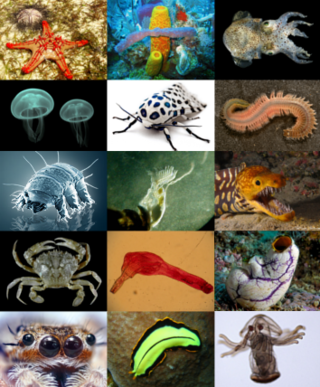
Penguins are a group of aquatic flightless birds from the family Spheniscidae of the order Sphenisciformes. They live almost exclusively in the Southern Hemisphere: only one species, the Galápagos penguin, is found north of the Equator. Highly adapted for life in the ocean water, penguins have countershaded dark and white plumage and flippers for swimming. Most penguins feed on krill, fish, squid and other forms of sea life which they catch with their bills and swallow whole while swimming. A penguin has a spiny tongue and powerful jaws to grip slippery prey.

Nepal, officially the Federal Democratic Republic of Nepal, is a landlocked country in South Asia. Mainly situated in the Himalayas, it also includes parts of the Indo-Gangetic Plain. It borders the Tibet Autonomous Region of China to the north, and India to the south, east, and west, while being narrowly separated from Bangladesh by the Siliguri Corridor, and from Bhutan by Sikkim. Nepal's geography is diverse, featuring the Himal region with its high mountains, the hilly Pahad region, and the fertile Terai plains. This varied topography includes eight of the world’s ten tallest mountains, including Mount Everest, the highest point on Earth. Kathmandu is the nation's capital and the largest city. Nepal is a multi-ethnic, multi-lingual, multi-religious, and multi-cultural state, with Nepali as the lingua franca and official language.

The Tashkent Metro is the rapid transit system serving the city of Tashkent, the capital of Uzbekistan. It was the seventh metro to be built in the former USSR, opening in 1977, and the first metro in Central Asia. Each station is designed around a particular theme, often reflected in the station name.

Animals are multicellular, eukaryotic organisms in the biological kingdom Animalia. With few exceptions, animals consume organic material, breathe oxygen, have myocytes and are able to move, can reproduce sexually, and grow from a hollow sphere of cells, the blastula, during embryonic development. Animals form a clade, meaning that they arose from a single common ancestor.
Gennadi Anatolyevich Denisov is an Uzbekistani professional football coach and a former player. His son Vitaliy Denisov is also a professional footballer.

Chilanzar is one of 12 districts (tuman) of Tashkent, the capital of Uzbekistan.

Bektemir is one of 12 districts (tuman) of Tashkent, the capital of Uzbekistan.

Sergeli is one of 12 districts (tuman) of Tashkent, the capital of Uzbekistan.
Glipostena is a genus of beetles in the family Mordellidae, containing the following species:

Mordellinae is a subfamily of beetles commonly known as tumbling flower beetles for the typical irregular movements they make when escaping predators, or as pintail beetles due to their abdominal tip which aids them in performing these tumbling movements.
Glipostena congoana is a species of beetle in the genus Glipostena. It was discovered in 1952.
Glipostena dimorpha is a species of beetle in the genus Glipostena. It was discovered in 1999.
Glipostena hogsbacki is a species of beetle in the genus Glipostena. It was discovered in 1999. It is known from Sulawesi.
Glipostena medleri is a species of beetle in the genus Glipostena. It was discovered in 1999.
Glipostena nigricans is a species of beetle in the genus Glipostena. It was discovered in 2000.
Glipostena nemoralis is a species of beetle in the genus Glipostena. It was discovered in 1962.
Glipostena pelecotomoidea is a species of beetle in the genus Glipostena. It was discovered in 1911.
Glipostena ponomarenkoi is an extinct species of beetle in the genus Glipostena. The species was described from the late Eocene Rovno amber of Ukraine in 2009.
Yangihayot is one of 12 city districts (tuman) of Tashkent, the capital of Uzbekistan. It was created in 2020 from parts of the city districts Sergeli and Bektemir, and parts of the districts Zangiota, Quyichirchiq, Yangiyoʻl and Oʻrtachirchiq of Tashkent Region. Its area is 44.20 km2 (17.07 sq mi), and its population is 132,800 (2021).

The Tashkent explosion was an explosion that occurred in a warehouse in Sergeli District of Tashkent, the capital of Uzbekistan, on 28 September 2023, killing one person and injuring 162.








